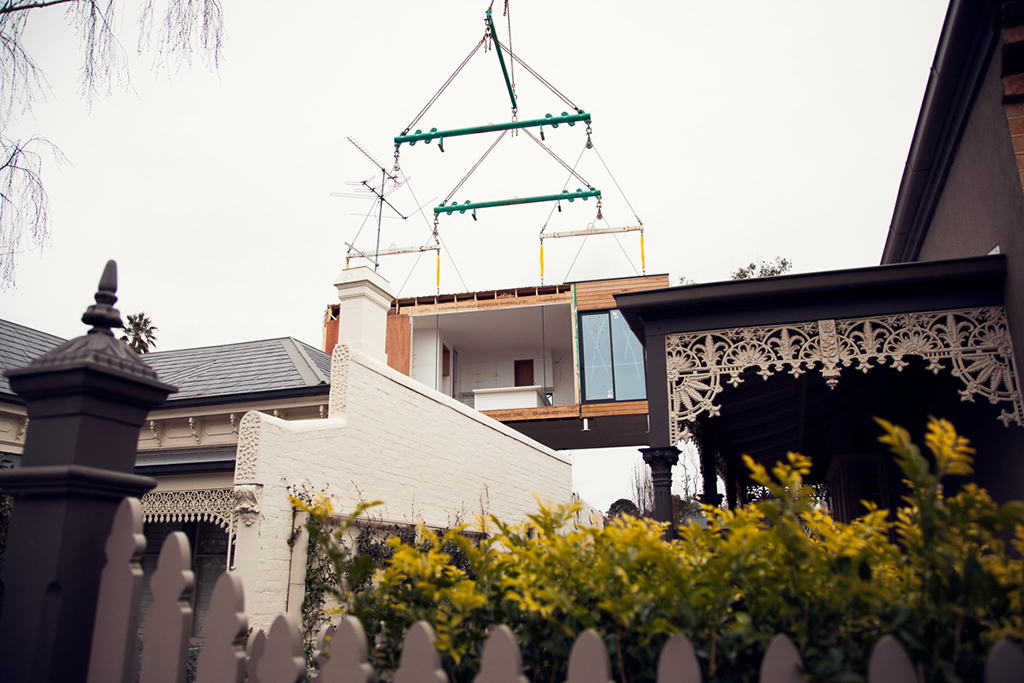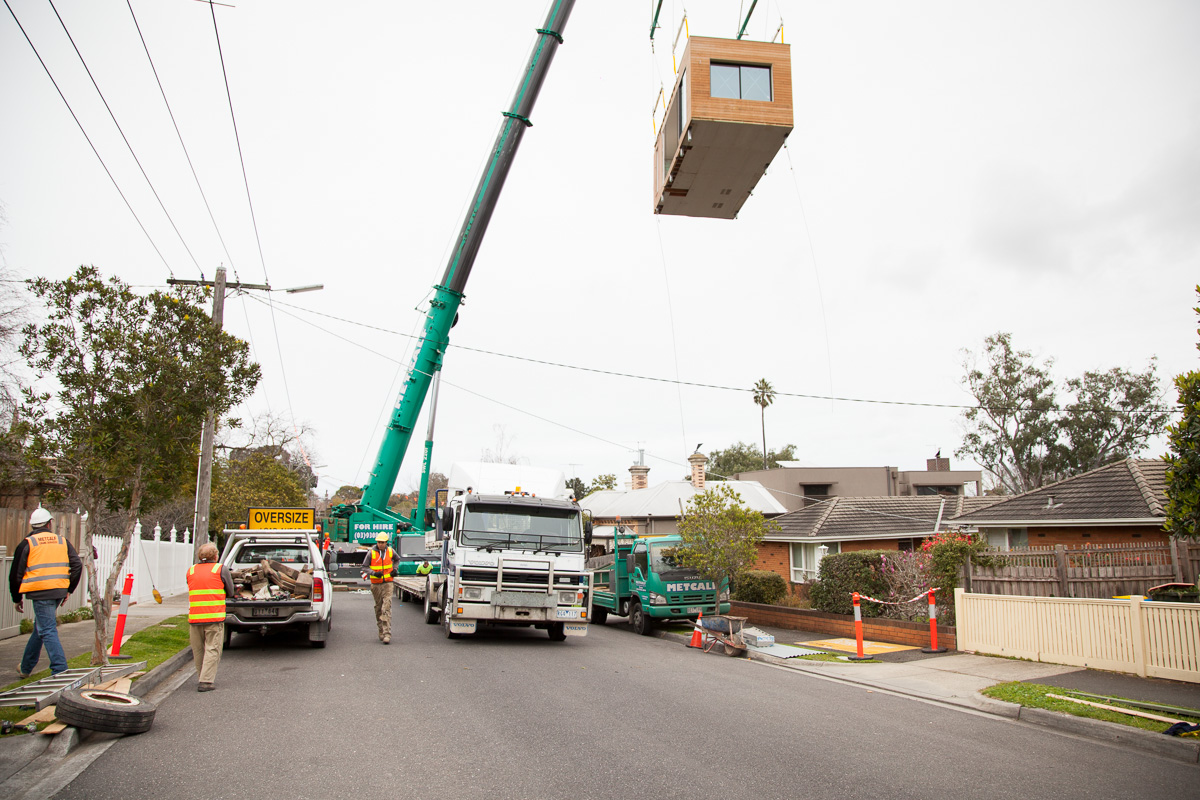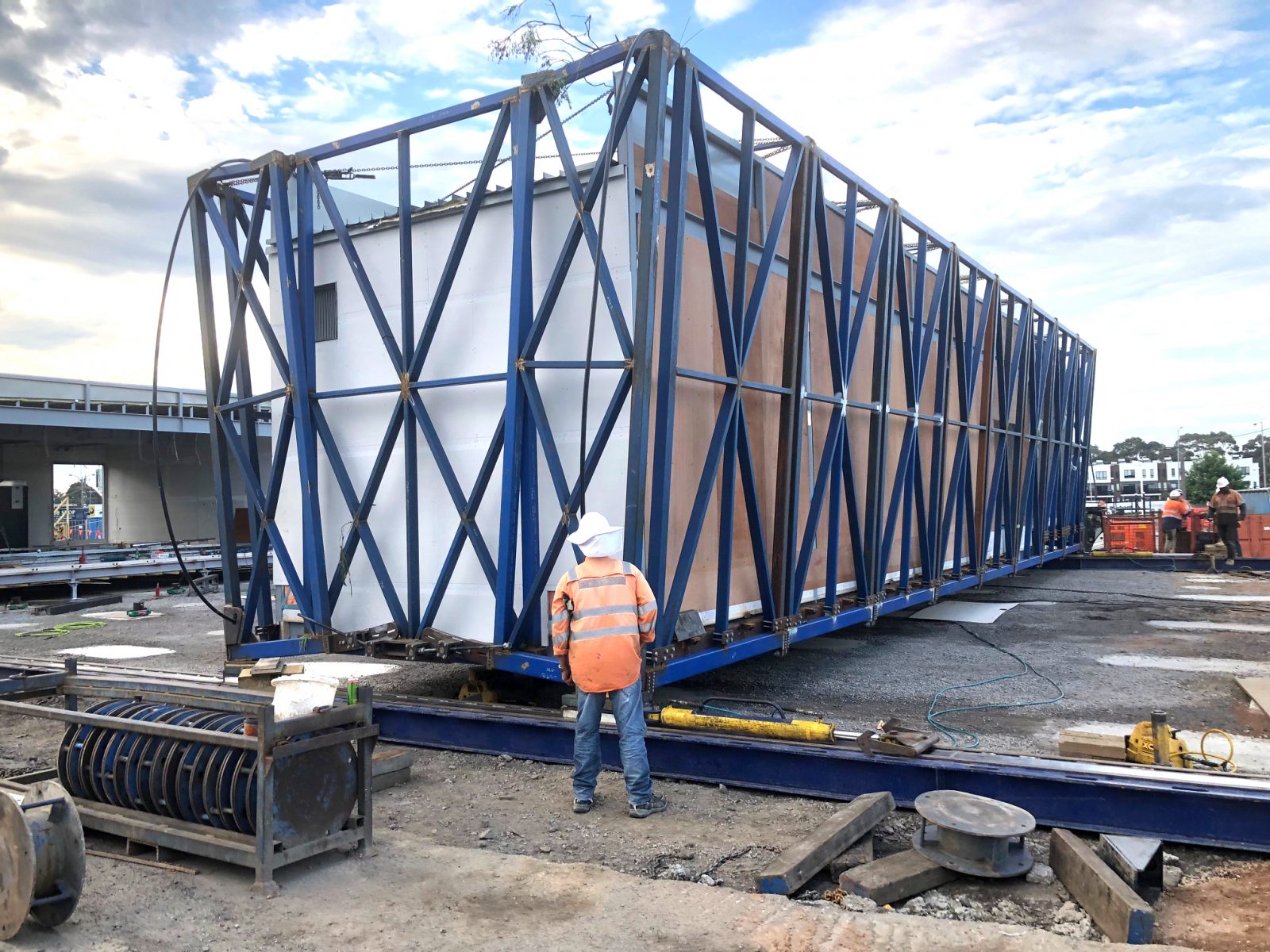02 July 2018
Commonly used in much of Europe, prefabrication is a more environmentally sustainable and socially beneficial way to build, and it’s taking off in Australia too.
The collapse of Australia’s automotive manufacturing industry has been devastating, with up to 40,000 workers estimated to ultimately lose their jobs.
Yet with a rapidly growing population and cranes dotting our city skylines, a new manufacturing industry is on the cusp of a boom: prefabricated construction.
Researchers at the University of Melbourne are looking at how this burgeoning industry can provide safe, affordable and sustainable housing, while also offering the opportunity for former automotive manufacturing workers to transfer their skills.

Image: Hawthorn Extension Install
Professor Tuan Ngo, Research Director of the Australian Research Council Training Centre for Advanced Manufacturing in Prefabricated Housing and the Asia-Pacific Research Network for Resilient and Affordable Housing, leads much of this work.
He says Australia has a lot to learn from European countries like Sweden, where prefabricated modular housing makes up 70 per cent of the construction industry. Extreme weather, in particular, long cold winters, can make building outside difficult there, so prefabricated components are created in manufacturing plants instead.
Why Prefab in Australia?
Professor Ngo says supply is unable to meet increasing demand in the traditional Australian construction sector. Meanwhile, costs are rising, contributing to the housing affordability crisis affecting many Australians struggling to buy their first homes.
“We are seeing a huge demand in the building industry for new techniques that will allow for the development of faster and cheaper construction. The only way to reduce costs is to reduce the cost of manufacturing,” he says.

Image: Byron Bay House Install
“The future is going to be prefabricated in terms of infrastructure, so that is why we’re doing a lot of work at the moment to develop our capability in this area.”
Professor Ngo says prefabrication involves three main types of construction:
• Simple Elements Beams, columns or other parts of a structure that have been manufactured to be easily bolted into place onsite.
• Panelised Systems These are used for walls and include elements such as insulation, utilities, waterproofing and external and internal cladding. These components are designed to allow for rapid assembly and flat pack transportation.
• Volumetric Systems Three-dimensional modular objects that comprise the floor, ceiling and wall components for a single room. This is Archiblox’s area of expertise.

Image: Hawthorn Extension Install
“The new generation of prefabricated buildings have lighter and stronger structural components. Prefabrication also offers opportunities to have high performing thermal and acoustic walls, floors and ceilings by combining durable and sustainable materials into systems such as sandwich panels.
“These days, things can be done much more affordably and efficiently in the factory, but at the moment there is still a lot of onsite work taking place in Australia, and that’s why I think quality and safety has been a problem. You can reduce and minimise those risks with prefabrication.”
The Benefits of Prefabrication
Prefabrication could also make a huge societal impact by providing low-cost emergency accommodation, particularly for homeless people in cities. Also, if a large scale disaster happens, we can develop shelters that can be sent to the site and can quickly put together to host thousands of people.

Image: Signal Control Centre
Some of the other benefits of prefabrication include:
• Speed Prefabricated structures are reconfigurable and movable. They are very versatile. Increased prefabrication could see the time it takes to build a house reduced from around nine months to less than one.
• Sustainability Prefabrication is also environmentally sustainable, with more upfront planning meaning less waste, less re-work and less material in the finished product.
• Minimizing Waste Factors can control how waste is processed to maximise recycling – which is not achievable on conventional construction sites.
• Quality Skilled workers in a controlled factory environment also create better quality work than may be possible on a building site.
• Environmental Performance Higher quality work results in better thermal performance, reducing the cost of heating and cooling for the user.
First published on 9 January 2018 in Engineering and Technology.
Original words by Greta Harrison (amended and abridged).
We love sharing all the new and exciting things happening at Archiblox, so make sure you’re following us on
Instagram,
Facebook
and
Twitter,
or signed up to our
monthly newsletter, to ensure you don’t miss a thing.